This article was co-authored by Jonathan Frank, MD. Dr. Jonathan Frank is an Orthopedic Surgeon based in Beverly Hills, California, specializing in sports medicine and joint preservation. Dr. Frank's practice focuses on minimally invasive, arthroscopic surgery of the knee, shoulder, hip, and elbow. Dr. Frank holds an MD from the University of California, Los Angeles School of Medicine. He completed an orthopedic residency at Rush University Medical Center in Chicago and a fellowship in Orthopedic Sports Medicine and Hip Preservation at the Steadman Clinic in Vail, Colorado. He is a staff team physician for the US Ski and Snowboard Team. Dr. Frank is currently a scientific reviewer for top peer-reviewed scientific journals, and his research has been presented at regional, national, and international orthopedic conferences, winning several awards including the prestigious Mark Coventry and William A Grana awards.
There are 19 references cited in this article, which can be found at the bottom of the page.
This article has been viewed 84,986 times.
Popping and cracking in your knees is generally not something to worry about. It's most often caused by the kneecap not translating up and down perfectly in the center of the knee joint.[1] However, this roughness and grinding could lead to a loss of cartilage in your knee, which can lead the onset of osteoarthritis.[2] If you're worried about new sounds your knees are making, go see a doctor. Otherwise, take steps to help your knees, such as giving your knees a break by maintaining a healthy lifestyle, strengthening your leg muscles, and keeping an eye out for worsening knee problems.
Steps
Stretching and Strengthening Your Legs
-
1Use calf releases to lengthen muscles. To perform this exercise, sit on the floor. Place a tennis ball under one calf. Put your other leg on top of the first leg. Roll your calf up and down on the tennis ball. If you hit a tight spot, wiggle your foot up and down for about half a minute.
- This exercise helps stretch out your calf muscles. If these muscles are tight, they can put pressure on your knee, possibly pulling the kneecap out of alignment.
- Try this exercise 6 times a week.
-
2Work on tender spots in your IT band to stretch the ligament. While on your side, place a foam roller under your thigh. Roll your leg up and down on it from the hip to the knee. If you hit a sore spot, spend extra time using the foam roller on that spot.
- This ligament stretches from your thigh to your shin. Sometimes, it has tight spots that tug on your knee, putting pressure on it.[3]
- Work on rolling out spots for 30 seconds to 2 minutes at least 6 times a week.
Advertisement -
3Try a hip flexor release to stretch your hip muscles. Tape 2 tennis balls together to make a larger roller. Lay face down on the floor, and put the roller under your hip just below the hip bone. Lean into the balls as much as you can, and lift that calf off the ground, creating a 90-degree angle with your leg. Swing your leg side to side for 30 seconds or so.
- The hip muscles also work to keep the knee properly aligned. If they are out of whack, it can cause problems with your knee.[4]
-
4Try quadriceps sets to strengthen the quadriceps muscles. Sit on the floor with your legs out in front of you. Tighten your quadriceps muscles, using your hand to check they're tight. Hold for 8 seconds and then release for 2.[5]
- The quadriceps are the muscles at the front of your thigh, and making these muscles stronger can help prevent further knee problems.
- Work up to repetitions of 30.
- Aim for 2-3 days a week of strength training.[6]
-
5Do straight-leg raises to work your quadriceps. Lay on you back on the floor. Have one leg out flat in front of you and the other bent at the knee. Tighten your quadriceps, and tilt the leg flat on the ground outward a little. Lift the flat leg off the floor about 6 to 8 inches (15 to 20 cm), then lower it back down.[7]
- Begin with 2-3 repetitions and move up to 10-12.[8]
-
6Work on wall squats to make your quadriceps stronger. Stand with your back up against the wall. Your feet should be 1 to 2 feet (0.30 to 0.61 m) from the wall. Using the friction of the wall, lower yourself down until you're in a sitting position. If you can't go that far, don't force it. Stay in this position for 20 seconds.[9]
- Try 10 repetitions.
-
7Swim regularly to make your quadriceps stronger. Swimming is a great way to strengthen these muscles, taking pressure off your knee, so try to incorporate swimming into your exercise routine. Aim for 30 to 45 minutes 3 to 5 days a week.[10]
- If you don't like swimming, try doing some water aerobics instead.
-
8Exercise by walking on level ground. Walking is a great way to strengthen your quad muscles. However, if you're beginning to develop knee problems, stick to level ground as much as possible, particularly if your problems are structural.[11]
- Try walking in a mall or an indoor walking track.
- Choose walking for one or more of your 3 to 5 exercise days in the week. Walk for 30 to 45 minutes.
-
9Take your bike out for a ride. Hopping on your bike is another low-impact way to strengthen your quadriceps. Stationary bikes or regular bikes work equally as well, though don't jump into an advanced cycling class if you haven't been exercising. Start slow and steady.[12]
- Add this into your routine by making it one of your 3 to 5 exercise sessions in the week. Aim for 30 to 45 minutes.
Checking with Your Doctor
-
1Pay attention to knee pain. If you start having knee pain along with creaking knees, you should have your knees evaluated by a doctor. The pain could be a sign you're developing other conditions, such as osteoarthritis.[13]
- Osteoarthritis gets progressively worse over time, and treatment can help stop the worsening effect. Talk to your doctor about how diet and exercise can help treat osteoarthritis.
-
2Look for swelling around your knees. Fluid in and around the joint can lead to swelling. Swelling, especially when accompanied by pain, can indicate a knee condition that needs treatment. If you notice swelling in your knees, make an appointment to see your doctor.[14]
- Swelling can be an indicator of osteoarthritis, as well as other conditions.
-
3Notice stiffness in your knee joints. Stiffness, or having difficulty bending your knees, can also indicate the development of a knee disorder. Specifically, this symptom is common with osteoarthritis and rheumatoid arthritis.[15]
-
4Check if your knee is hot to the touch. With some diseases, such as rheumatoid arthritis, your joint will be hot to the touch. You may also notice redness in the area.[16]
- If you notice these symptoms, make an appointment to see your doctor.
-
5Seek immediate medical care for sudden injuries. If you have a sudden onset of pain or your knee buckles, see a doctor right away. Go to urgent care or the emergency room if you have intense pain, you can't stand on your knee, or you have sudden swelling.[17]
- Also go to urgent care or the emergency room if your limb looks deformed or if you heard a popping sound when you were injured.
- To help with the pain right away, take an NSAID like Ibuprofen.
-
6Expect a physical exam. The doctor will likely begin with a physical exam. They may feel your knee, for instance, to check if it's swollen. They will also ask you about your recent medical history and why you're coming in for a visit.[18]
- Tell your doctor why you came in: "I've been experiencing new crackling and popping sounds in my knee. I've read they're mostly harmless, but they can also indicate the beginnings of osteoarthritis. I wanted to have my knees checked out just in case."
-
7Ask your doctor about an X-ray. While having creaky knees isn't an issue by itself, it can sometimes indicate the beginning of osteoarthritis. Ask your doctor if an X-ray is appropriate to check if you're developing this condition.[19]
- The doctor may also request a bone scan, MRI, CAT scan, or biopsy to help diagnose any condition you may have.[20]
- Your doctor may also refer you to a sports medicine specialist to diagnose your condition.
-
8Expect over-the-counter medications for osteoarthritis. If your doctor does diagnose you with osteoarthritis, you'll start with basic pain medications such as acetaminophen and aspirin. Your doctor might also suggest ibuprofen for inflammation.[21]
-
9Discuss supplements with your doctor. Some supplements, such Boswellia serrata and avocado-soybean unsaponifiables (ASU), may provide some relief. However, they mainly work with pain, and only limited evidence supports their effectiveness. If you would like to try a supplement, discuss taking one with your doctor.[22]
Giving Your Knees a Break
-
1Lose extra weight. Extra weight puts more pressure on your knees, so it can make conditions like osteoarthritis worse. If you're beginning to lose cartilage, losing weight may help slow down the progression of this condition.[23] Work on eating a healthy, balanced diet, including lean proteins, fruits and vegetables, whole grains, and low-fat dairy.
- At mealtime, fill half your plate with fruits and vegetables. About a fourth of your plate should be a palm-sized serving of lean protein. Fill in the rest of your plate with whole grains, and have a helping of low-fat dairy on the side.[24]
- Cut back on sugary drinks and snacks, as they increase your caloric intake without adding much nutrition.
- Try to exercise 30 minutes a day most days of the week.
- Calculate your body mass index (BMI) to help you figure out how much weight you need to lose.
-
2Wear workout shoes to exercise. When you're doing a higher-impact activity like running or performing aerobic exercises, wear shoes made for exercise. Exercise shoes absorb more of the impact than other shoes, taking pressure off your knees. Make sure to get fitted by a professional at a sporting good store for the most support.[25]
- Stilettos and other high heels can wreak havoc on your knees so avoid them as much as possible.
-
3Stand up straight and strengthen your core muscles. If you are constantly slumping over, you're putting more pressure on your knees, while standing up straight can take some of the pressure off. To improve your overall posture, work on strengthening your core muscles.[26]
- Use an app to remind you to stand up straight or set reminders for yourself throughout the day.
- Try planks to strengthen your core. Lay face down on the floor with your forearms flat on the ground. Clenching the muscles in your core, push off the floor. Rest on your forearms and toes, making a straight line with your body, and hold it for about 30 seconds.
- Consider taking a yoga or pilates class, which can also strengthen your core.
-
4Avoid sports that put you at risk for a knee injury. Collision sports, such as hockey and football, and contact sports, such as baseball, soccer, and basketball, put you at a higher risk for a knee injury. If you're at risk for developing knee issues, try to avoid playing these sports.[27]
-
5Take 100-300 mg of vitamin E a day. Vitamin E can help slow down the progression of knee conditions such as osteoarthritis. Most people can take a regimen of 100-300 mg of vitamin E a day without any side effects. However, always check with your doctor before starting a supplement.[28]
Expert Q&A
Did you know you can get expert answers for this article?
Unlock expert answers by supporting wikiHow
-
QuestionIs it bad if your knee keeps cracking?
 Jonathan Frank, MDDr. Jonathan Frank is an Orthopedic Surgeon based in Beverly Hills, California, specializing in sports medicine and joint preservation. Dr. Frank's practice focuses on minimally invasive, arthroscopic surgery of the knee, shoulder, hip, and elbow. Dr. Frank holds an MD from the University of California, Los Angeles School of Medicine. He completed an orthopedic residency at Rush University Medical Center in Chicago and a fellowship in Orthopedic Sports Medicine and Hip Preservation at the Steadman Clinic in Vail, Colorado. He is a staff team physician for the US Ski and Snowboard Team. Dr. Frank is currently a scientific reviewer for top peer-reviewed scientific journals, and his research has been presented at regional, national, and international orthopedic conferences, winning several awards including the prestigious Mark Coventry and William A Grana awards.
Jonathan Frank, MDDr. Jonathan Frank is an Orthopedic Surgeon based in Beverly Hills, California, specializing in sports medicine and joint preservation. Dr. Frank's practice focuses on minimally invasive, arthroscopic surgery of the knee, shoulder, hip, and elbow. Dr. Frank holds an MD from the University of California, Los Angeles School of Medicine. He completed an orthopedic residency at Rush University Medical Center in Chicago and a fellowship in Orthopedic Sports Medicine and Hip Preservation at the Steadman Clinic in Vail, Colorado. He is a staff team physician for the US Ski and Snowboard Team. Dr. Frank is currently a scientific reviewer for top peer-reviewed scientific journals, and his research has been presented at regional, national, and international orthopedic conferences, winning several awards including the prestigious Mark Coventry and William A Grana awards.
Sports Orthopedic Surgeon & Joint Preservation Specialist
Warnings
- Always consult a doctor before starting any exercise routine.⧼thumbs_response⧽
- Don't ignore knee problems, such as sudden and severe pain while playing a sport. It's always best to get checked out by a doctor.⧼thumbs_response⧽
References
- ↑ Jonathan Frank, MD. Sports Orthopedic Surgeon & Joint Preservation Specialist. Expert Interview. 31 July 2020.
- ↑ https://www.research.va.gov/currents/0517-arthritis.cfm
- ↑ Jonathan Frank, MD. Sports Orthopedic Surgeon & Joint Preservation Specialist. Expert Interview. 31 July 2020.
- ↑ Jonathan Frank, MD. Sports Orthopedic Surgeon & Joint Preservation Specialist. Expert Interview. 31 July 2020.
- ↑ https://www.youtube.com/watch?v=qurXz2ki9bo
- ↑ https://www.uofmhealth.org/health-library/hw125723
- ↑ https://www.youtube.com/watch?v=ApLHDCgRxHQ
- ↑ https://www.uofmhealth.org/health-library/hw125723
- ↑ https://www.youtube.com/watch?v=2aDIbHjvB10
- ↑ https://www.uofmhealth.org/health-library/hw125723
- ↑ https://www.rush.edu/health-wellness/discover-health/preventing-knee-pain
- ↑ https://creakyjoints.org/diet-exercise/cycling-and-arthritis/
- ↑ https://my.clevelandclinic.org/health/diseases/21978-arthritis-of-the-knee
- ↑ https://www.arthritis-health.com/types/osteoarthritis/knee-osteoarthritis-symptoms
- ↑ https://my.clevelandclinic.org/health/diseases/21978-arthritis-of-the-knee
- ↑ https://www.arthritis-health.com/types/osteoarthritis/knee-osteoarthritis-symptoms
- ↑ https://www.nhs.uk/conditions/knee-pain/
- ↑ https://www.arthritis-health.com/types/osteoarthritis/knee-osteoarthritis-diagnosis
- ↑ https://www.research.va.gov/currents/0517-arthritis.cfm
- ↑ https://my.clevelandclinic.org/health/diseases/21978-arthritis-of-the-knee
- ↑ https://health.clevelandclinic.org/what-you-can-do-about-stiff-achy-knees/
- ↑ https://www.health.harvard.edu/pain/joint-support-supplements-for-arthritis
- ↑ https://www.research.va.gov/currents/0517-arthritis.cfm
- ↑ https://www.choosemyplate.gov/
- ↑ https://www.rush.edu/health-wellness/discover-health/preventing-knee-pain
- ↑ https://www.rush.edu/health-wellness/discover-health/preventing-knee-pain
- ↑ https://www.research.va.gov/currents/0517-arthritis.cfm
- ↑ https://www.ncbi.nlm.nih.gov/pmc/articles/PMC4907215/
About This Article
One of the best ways to stop your knees from popping and cracking is to stretch and strengthen your legs. Calf releases, hip flexor releases, wall squats, and straight leg raises are all great options. Riding your bike, swimming, and even just going for a walk on flat ground can also help strengthen your legs and prevent popping. If you're experiencing pain, swelling, or stiffness along with the popping, or if your knees feel hot to the touch, make sure you talk to your doctor since there could be an underlying issue that you'll want to address. They'll do a physical exam and possibly an X-ray to help you figure out what's going on with your knees. To learn some healthy lifestyle changes you can make to keep your knees in good shape, check out the full article below!

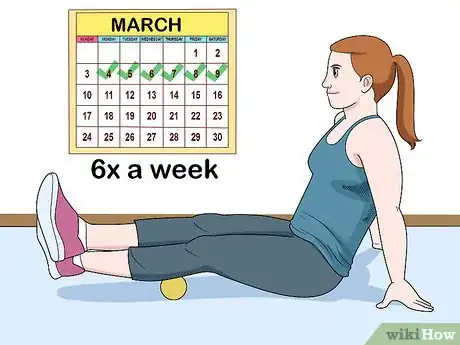
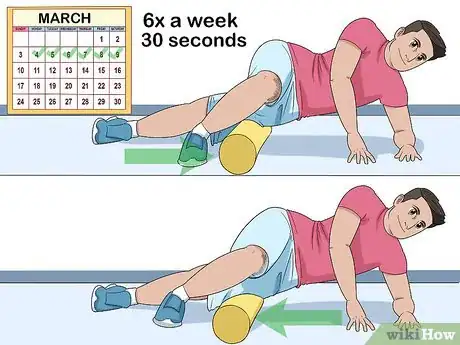
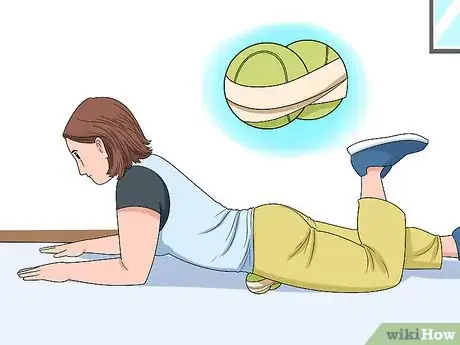
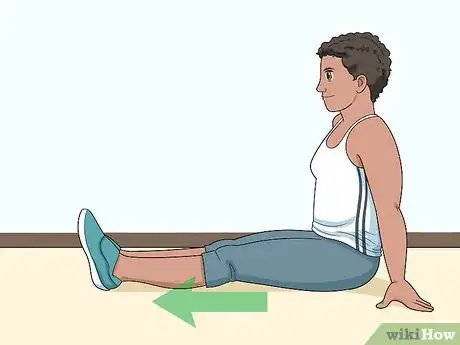

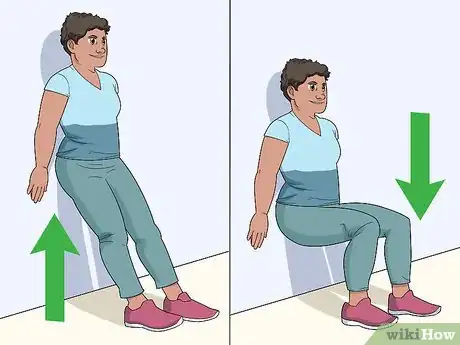

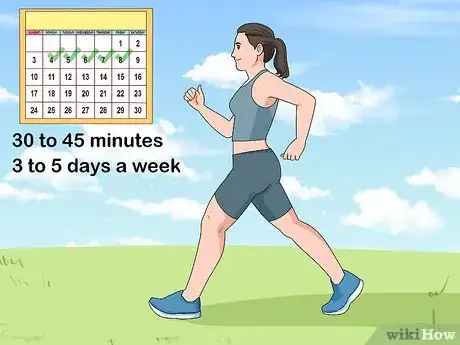
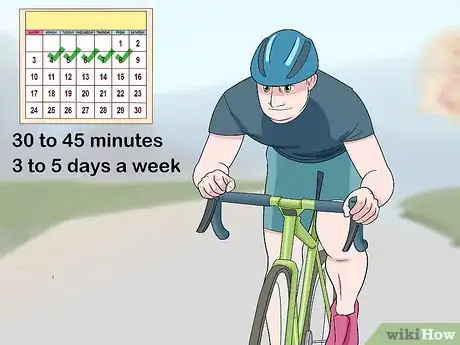
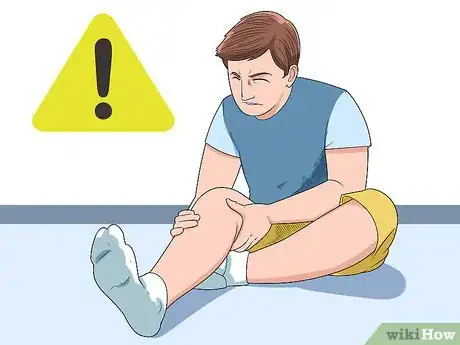
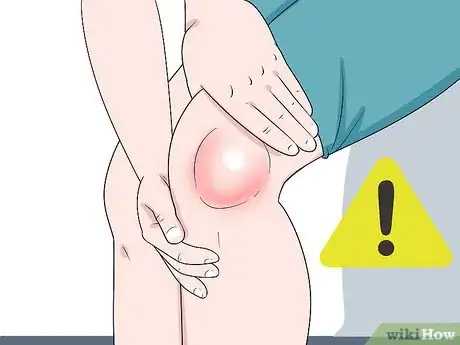

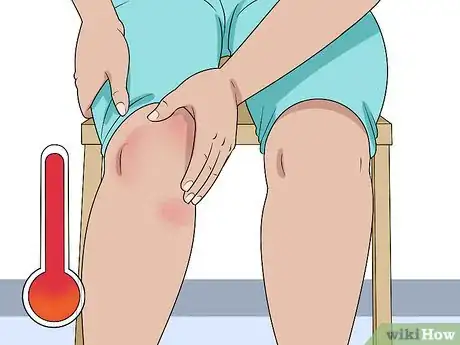
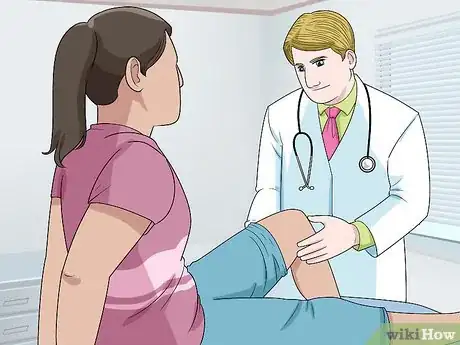

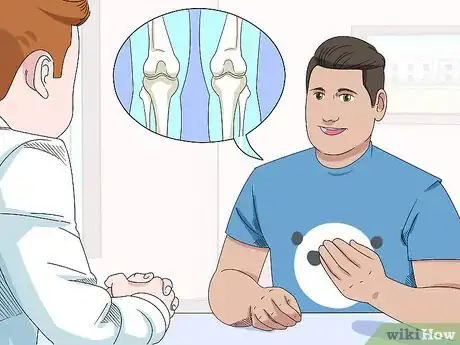
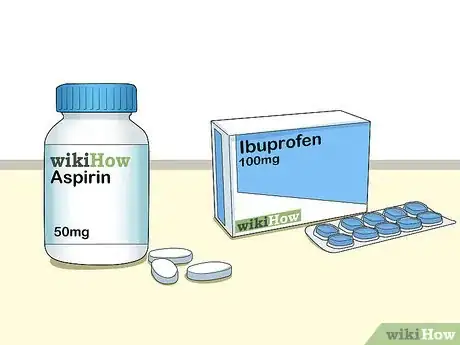
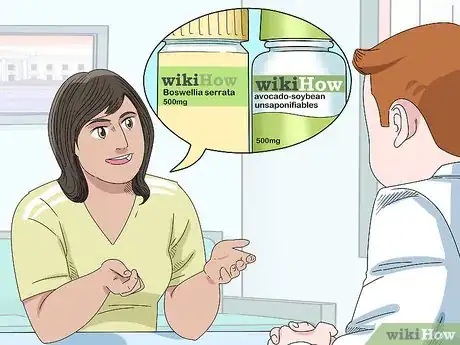



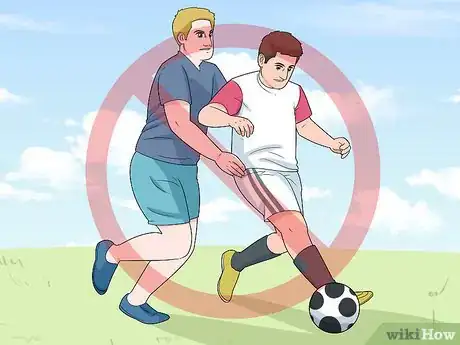


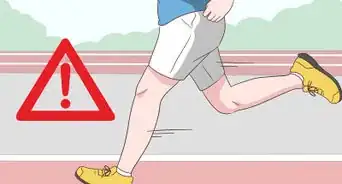

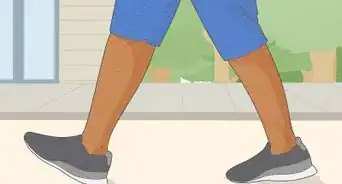
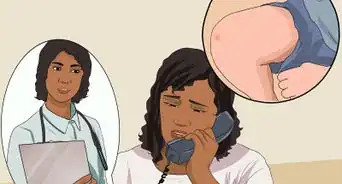

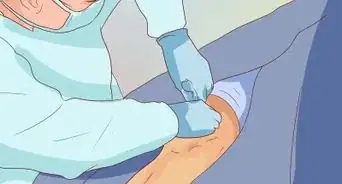
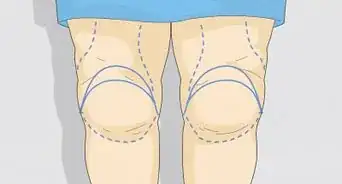
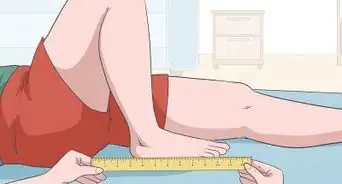
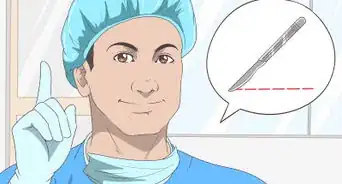

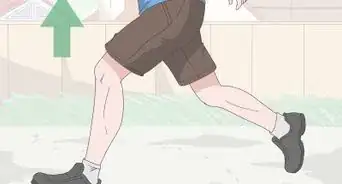
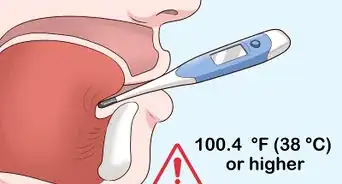







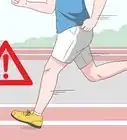





































Medical Disclaimer
The content of this article is not intended to be a substitute for professional medical advice, examination, diagnosis, or treatment. You should always contact your doctor or other qualified healthcare professional before starting, changing, or stopping any kind of health treatment.
Read More...